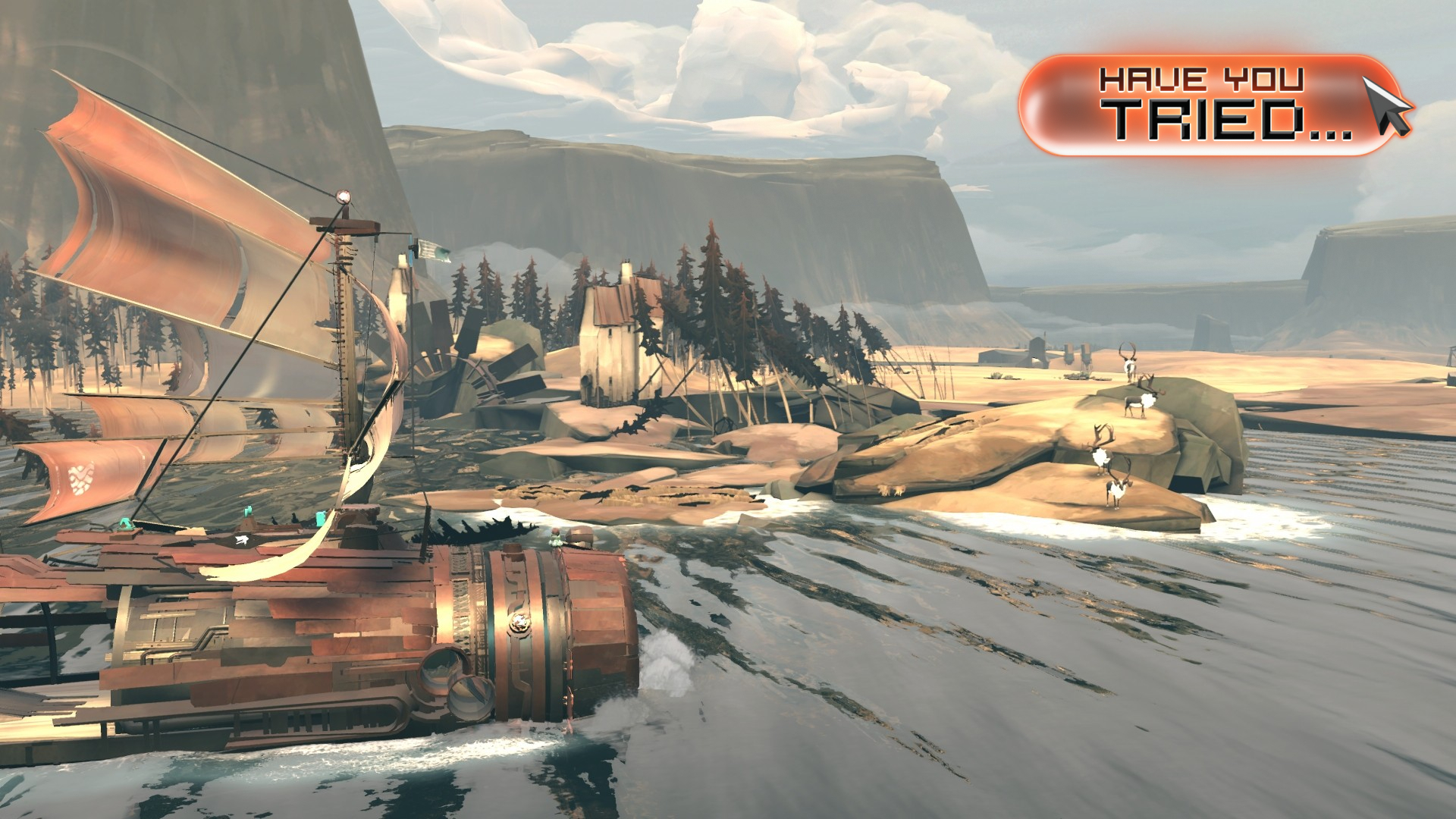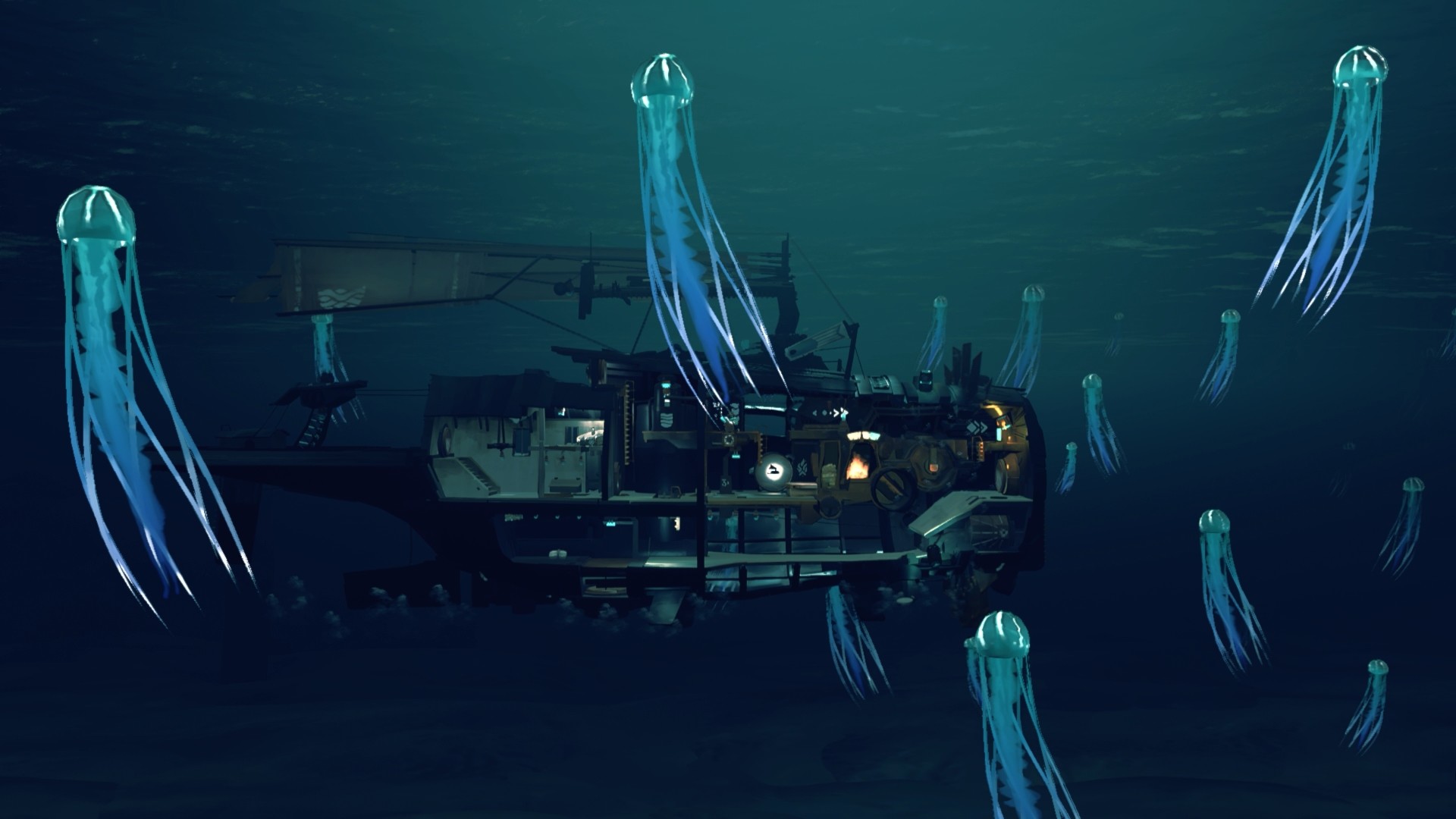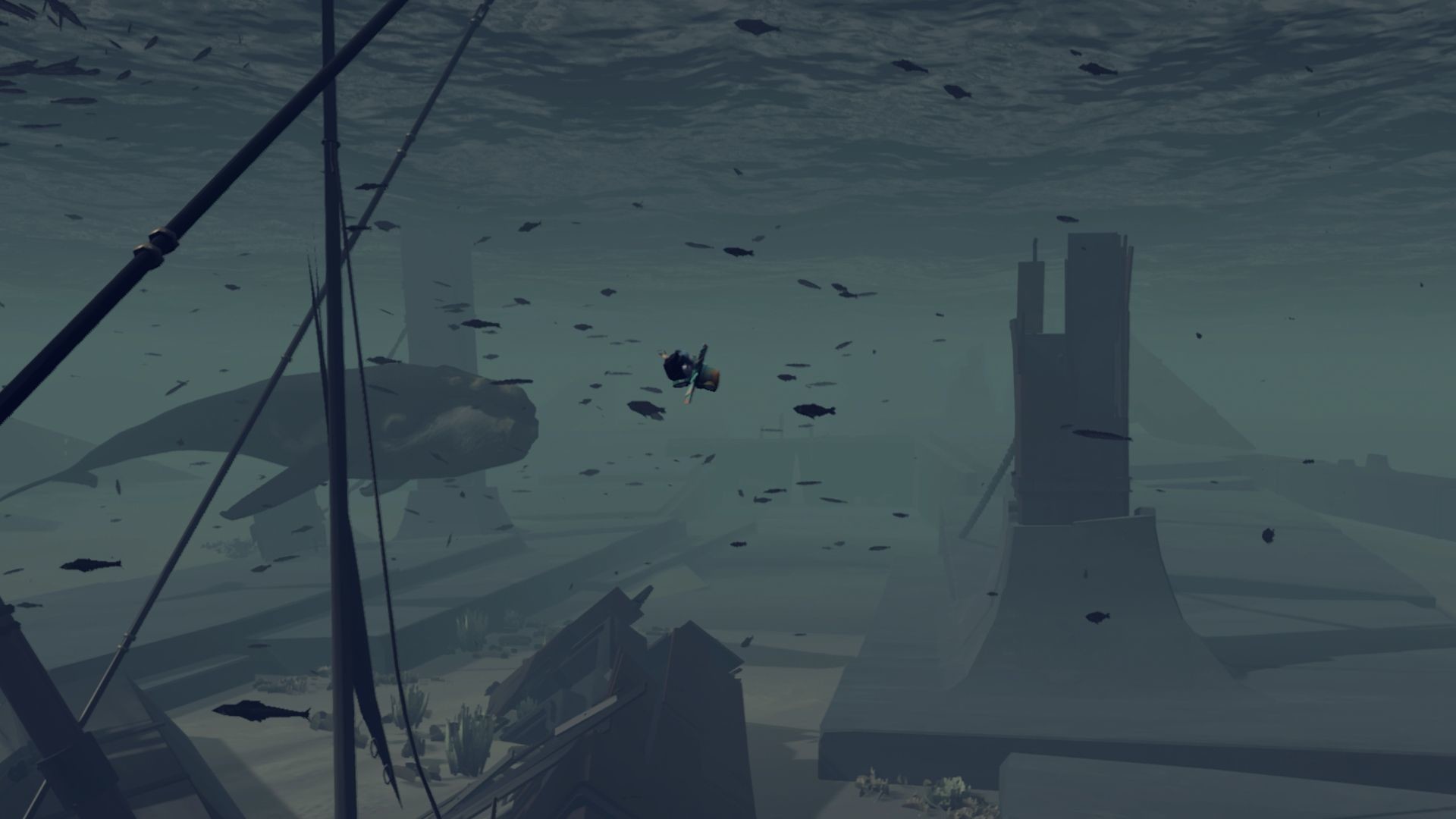Have you tried… being overly protective of a boat and a plant in Far: Changing Tides?
It's a tale of ancient ones, transforming boats, and one solitary plant

In the old, abandoned relics of a wooden house, there's a small bright petal plant in a green pot that's still thriving in Far: Changing Tides. I can't help but pick it up, this little flash of color in a world of muted tones. Flinging it on my back, it's not long before I'm setting sail on my huge mechanical ship, the plant safely tucked in the hold, along with parcels of debris that you'll have to keep hunting down to use as fuel.
Far: Changing Tides can't help but give you an odd sense of sentimentality for inanimate things. The game revolves around a young boy, who must set sail to discover what lies beyond in this flooded world. The ship becomes your home, your safe space, just as the land vehicle was for the first game, Far: Lone Sails. In fact, if you've played the first game, there are a lot of similarities here, just with a lot more water, added 3D depth to the visuals, and more options to explore and problem solve away from the ship - as terrifying as that may feel at times. It's a stylized and beautiful adventure that somehow manages to better the first, without sacrificing any of the simplicity that made Far: Lone Sails really sing.
Peace and puzzles

In Far: Changing Tides, initially, all you'll have to worry about when it comes to running your ship is the sails. You'll be raising the mast, securing it down, and then maneuvering the sails to make sure they catch the most wind. Just that alone is a full-time job, with the sails constantly needing small adjustments in order to keep up the pace. Occasionally you may have to whip the mast down to avoid a low-hanging structure,
But that means that when there are moments for quiet reflection. When the wind is billowing perfectly against your sails, the game's ludicrously beautiful soundtrack swells in, and all you need to do is wait and watch, it's a glorious few minutes of peace. Those never last long enough to outstay their welcome, so you end up being grateful for them when they do arrive because there are plenty of chaotic moments and action elsewhere.
For your ship doesn't just stay a sailboat forever. Soon you'll be pinching parts you'll find in the world to upgrade it, first with an engine that will provide power when the winds disappear, and later cranks, pullies, and other gadgets that will help you solve the various puzzles and obstacles that will try to impede your journey.
Every time you're forced to stop, by some giant rock or still standing building, then there's something to discover. They'll always require wandering away from your ship to explore overground, or later underwater, to push switches, drag boxes, or solve some other kind of environmental puzzle. None of the little riddles are too complex but each one is rewarding to solve because there's always some little cinematic moment you're given to celebrate - cue that swelling music once more for added punch.
Green fuel

It's in these sailing deviations that you find the majority of the game's story. It's abstract, and often stoic, but realistically it's not the story that'll keep you pushing eastwards. The hook here is upgrading your ship, and discovering the next puzzle that's no doubt around the next bend.
Sign up to the GamesRadar+ Newsletter
Weekly digests, tales from the communities you love, and more
But even away from those specific moments of stepping away from your ship, there's always something to worry about as you explore. Maintenance is key. Things within your ship can break, and you'll have to fix them, and you'll regularly find yourself running from one end of the ship to another to fix the sails, or turning back to power up the engines when the wind drops. Later when your ship becomes capable of going beneath the waves, you'll have to manage the depth you're floating at too - which is a test of precision and timing.
Your ship is hungry too, and literally won't move if there's no wind or your engines run out of fuel, so you'll always have to keep a half-eye on the terrain that you're floating over to see if there's anything you can salvage to utilize later. Like a full-fledged sim game, management is key, and while there isn't exactly a failure state here, there are times when you feel a little frantic.
I found myself obsessing over debris, hauling whatever I could back to the ship whenever I found it. But, despite my best efforts, I still found myself grinding to a halt at an early point in the game, with not a jot of fuel in sight. I swam as far as I could in each direction until it dawned on me. The plant. My precious slice of color was still stored safely in the little living quarters of the ship. It's all I had left and my only hope for powering on through the depths. So into the engine furnace it went with a touch of sadness. And that's when the trophy popped - "Going Green". Well played Far: Changing Tides, well played.
Far: Changing Tides drops on PS5, PS4, Xbox Series X, Xbox One, PC, and Switch on March 1. There's a demo available now on Steam until Feb 28.

Sam Loveridge is the Brand Director and former Global Editor-in-Chief of GamesRadar. She joined the team in August 2017. Sam came to GamesRadar after working at TrustedReviews, Digital Spy, and Fandom, following the completion of an MA in Journalism. In her time, she's also had appearances on The Guardian, BBC, and more. Her experience has seen her cover console and PC games, along with gaming hardware, for a decade, and for GamesRadar, she's in charge of the site's overall direction, managing the team, and making sure it's the best it can be. Her gaming passions lie with weird simulation games, big open-world RPGs, and beautifully crafted indies. She plays across all platforms, and specializes in titles like Pokemon, Assassin's Creed, The Sims, and more. Basically, she loves all games that aren't sports or fighting titles! In her spare time, Sam likes to live like Stardew Valley by cooking and baking, growing vegetables, and enjoying life in the countryside.


